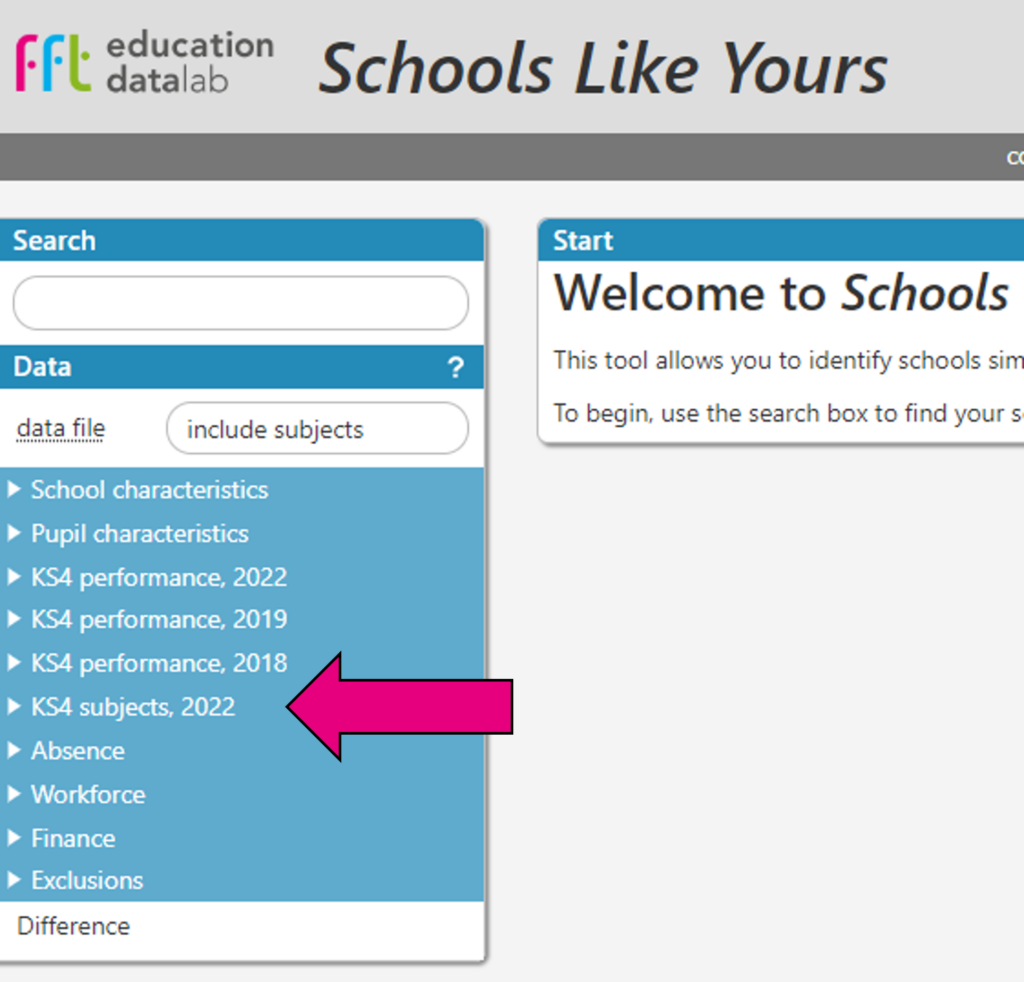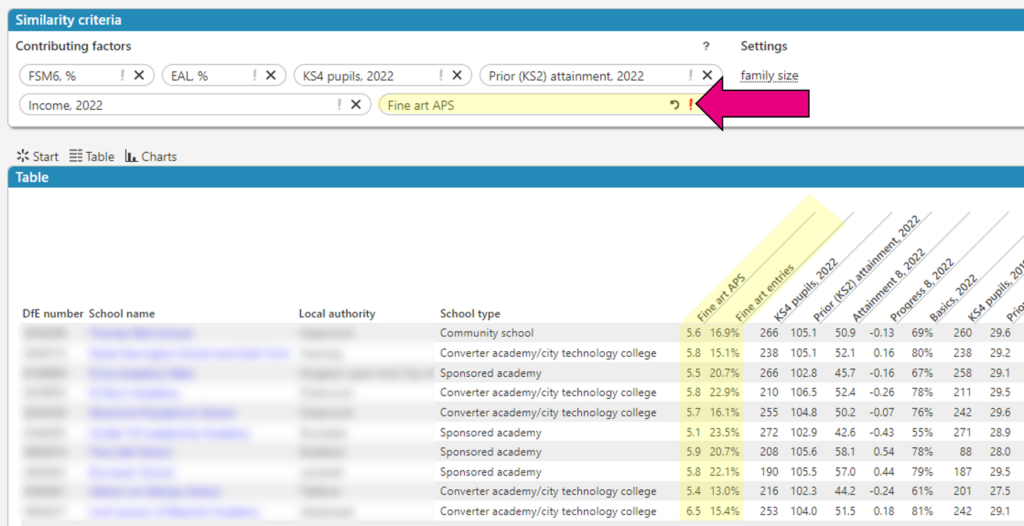If you’ve used our Key Stage 4 Schools Like Yours site in the past week or two you might have noticed some changes. That’s because we’ve been hard at work adding features you’ve told us you’d like to see.
For the uninitiated, Schools Like Yours is our school comparison tool. It lets you find a group of schools which are similar to yours, where you decide exactly what “similar” means. In its previous iteration, all of the similarity criteria were at school-level.
But now, we’ve added subject-level Key Stage 4 results too. So, if you want to see schools whose GCSE drama results are like yours, or where a similar proportion of the cohort is entered for GCSE double science, you can!
To celebrate, we’ll run through a quick demo in this post.
Activating the new dataset
First things first. To get access to all of this lovely subject-level data you’ll need to swap from the standard dataset to the new one.
When you reach the landing page, you’ll see a drop-down menu on the top left-hand side of the page. The default selection is “no subjects”. Click it, and choose “include subjects” instead, like so:

The page will refresh, and you’ll see a new sub-heading in the list on the left-hand side called “KS4 subjects, 2022”. Click on this to reveal the full list of subject-related columns available to you.

An example scenario
Let’s imagine I’m an art teacher looking for schools where pupils got similar results in GCSE art to my school.
I’ll leave the default contributing factors as they are because I’m not interested in schools with very different contexts to mine. So we’re already narrowing the group of schools down to those with a similar proportion of disadvantaged pupils to my school, a similar proportion of pupils with an additional language, similar Key Stage 4 cohort size in 2022, and similar income in 2022. To that list, I’ll add “Fine art APS” from the subjects section (and I’ll click and drag “Fine art APS” and “Fine art entries” into the view so that those items are added to the data columns).

The model is now using GCSE fine art APS to narrow down the list of similar schools.
I’m not interested in schools who didn’t offer fine art that year[1]. So I’ll only include schools where which have a value for fine art APS. To do this, I click the exclamation mark next to “Fine art APS” in the top panel.

I could stop here – I’ve got a list of schools like mine, where pupils took fine art last year, and got similar results to pupils in my school. Or I could add more criteria. Perhaps I want only schools where a similar proportion of pupils took fine art – I’d add “Fine art entries” as a contributing factor. Or maybe I’d like to arrange a visit to this school, so I want it to prioritise schools that are closer to mine – I’d add “Distance” from the “School characteristics” panel as a contributing factor, or “Local authority” as a filter.
Multiple subjects
That’s how you can use Schools Like Yours to investigate schools with similar results to yours in one subject. But perhaps you’re a head of faculty, and you’re interested in finding schools whose results are most similar to yours across all of your subjects.
In that case, you’d add all of your subjects’ APS values as similarity criteria (and you’d probably want to drag them over to the view too). You’d probably not click the exclamation mark next to all of your subject APSs, because you’re not interested in schools which offer all of them, especially if one or more of your subjects are quite niche. (Or you might, in which case, you can!)
The results you get would look something like this:

Explore the site now
To see this new feature in action, head on over to the site. And if you’ve got any feedback, or any ideas for future developments, get in touch either by leaving a comment here or sending us an email.
[1] The reason why the list shows schools which didn’t offer fine art is because “Fine art APS” is just one of the contributing factors we chose. You can read more about how similar schools are derived in the “What’s the difference?” section of our guide noting that where a school has no entries in a subject, their APS is ignored in the calculation of the difference.




Leave A Comment